Have you ever thought you want to do Japanese tea ceremony called “Sado”?
Japanese tea ceremony is tended to be thought too difficult to learn, but there are surprisingly small number of tools we need to prepare when we want to learn it.
We would like to introduce introductory set of tea ceremony when you want to start the Japanese traditional ceremony.
① “Kaishi-ire” or “Fukusa-basami” : Japanese pocket tissue pouch
② “Kobukusa” or “Dashi-fukusa” : Square of classic patterned fabric
③ “Kashi-kiri” or “Saya-tsuki-yoji” : Sweet picks
④ “Kaishi” : Kaishi paper, Japanese pocket tissue
⑤ “Fukusa” : Small silk cloth
⑥ “Rikyu-sensu” : Rikyu fan
With this 6-piece set above, you’ll be able to start practicing right away.
Starter sets are also available on the Internet and are reasonably priced, starting in the 2,000 yen range.
We can choose the design of our choice for Japanese pocket tissue of ① and small silk cloth of ⑤, so it is fun to look for our favorite ones.
- “Kaishi-ire” or “Fukusa-basami” : Japanese pocket tissue pouch
- “Kaishi-ire” or “Fukusa-basami” : Japanese pocket tissue pouch
- “Kobukusa” or “Dashi-fukusa” : Square of classic patterned fabric
- Kaishi paper : Japanese pocket tissue
- “Fukusa” : Small silk cloth
- “Rikyu-sensu” : Rikyu fan
- Extra tool : “Kojakin” and “Kojakin-ire” (“inen cloth and linen cloth porch)
“Kaishi-ire” or “Fukusa-basami” : Japanese pocket tissue pouch
It is a porch for storing a set of starter tools, such as Kaishi paper and small silk cloth.
During the tea ceremony, we need to carry all things we need in this porch.
The photo shows a pattern is treasure pattern and called “Takara-zukushi” in Japanese, but you can choose a cherry blossom pattern or a pattern of your choice, so if you find one that you like, your practice will be more enjoyable.
“Kaishi-ire” or “Fukusa-basami” : Japanese pocket tissue pouch
Square of classic patterned fabric, called “Kobukusa or “Dashi-fukusa” is used to carry the tea bowl to the guests and to drink thick tea.
Different schools of thought has different name and sizes, so check before we buy.
・”Urasenke” : Calls “Kobukusa”, Length 15.2cm * Width 16.3cm
→ Position the part of loop to the right and fold it in half lengthwise.
・”Omotesenke” : Callse “Dashi-fukusa, Length 27.3cm * Wdth 28.4cm
→ Position the part of loop to the right and fold it into a quarter.
・For men : Same as above.
- The picture above is “Kobukusa” of Urasenke.
- Regarding Omotesenke and Urasenke, we would like to pick up later.
“Kobukusa” or “Dashi-fukusa” : Square of classic patterned fabric
This is a kind of toothpick that is used to cut a cake into small pieces and carry it to our mouth when we receive it. It is usually placed between two pieces of kaishi paper.
The organizers may provide it, but it’s safer to have them with us just in case.
This one is the same for both schools and men and women.
Kaishi paper : Japanese pocket tissue
Kaishishi paper is a Japanese paper used to put sweets on top of it when receiving them from a confectionary bowl and to wipe the mouth of tea when receiving it.
For sweets that tend to stick together, such as mochi or rice cakes, we may use translucent, slightly slippery kaishi paper called Ryu-san paper.
In addition to the plain ones, there are also ones with zodiac sign patterns, seasonal flower openings and embossing, etc., so it’s fun to look for them.
Some classes may specify plain ones for practice, so it’s safe to have plain kaishi paper as well.
“Fukusa” : Small silk cloth
Fukusa is a cloth used to handle tea ware.
When used by the organizer, it is used to cleanse the tea ware when making tea, and when used by the guests, it is mainly used to view the tea utensils.
We should keep in mind that different schools and men and women have different colors that are commonly used.
・Urasenke : Red colored Fukusa
・Omotesenke : Vermillion colored Fukusa
・For men : Purple colored Fukusa
- The picture above is red colored Fukusa of Urasenke
“Rikyu-sensu” : Rikyu fan
A fan used in the tea ceremony is called a “Rikyu sensu” or “Cha sensu”, which is smaller than the normal size.
It It is used by placing it horizontally with closed in front of your knees when greeting someone with both hands.
It is not good manners to use it as fanning, no matter how hot it is.
Check with the teacher before you buy, as sizes vary by school and gender.
・Urasenke : 15.2cm
・Omotesenke : 19.5cm
→Sometimes even 15.2cm is fine. Check with classroom teacher.
・For men:18.1cm size at Urasenke, 19.5cm size at Omotesenke.
- The picture above is 15.2cm sized Rikyu fan of Urasenke
Extra tool : “Kojakin” and “Kojakin-ire” (“inen cloth and linen cloth porch)
If you are invited to a tea ceremony party, this starter set as well as a linen cloth called “kojakin” and a linen cloth porch called “kojakin-ire” will be perfect.
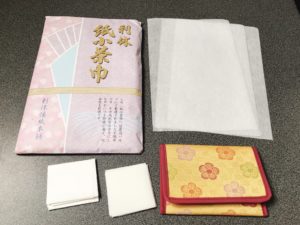
After taking your share of the tea, you have to wipe the part you drank from the bowl after you drank from it.
The linen cloth is used for this purpose. It is also called “wet chakin”.
Usually a linen cloth is used, but the paper kojakin is made of a non-woven fabric that is more resistant to tearing than kaishi paper.
Wet it with a little water and first, divide it into three equal parts lengthwise, fold it in half, and then fold it in half again and fold it into a small size to wipe the edge of the tea bowl we drank clean.
Also, the linen cloth porch is waterproofed and partitioned so that it can be separated into used and unused compartments.
The tea ceremony has an image of being a formal ceremony, but this is the minimum required tools.
Some of you may have thought It’s going to be easy to start!
Lastly, in case of the practice on tatami mat, you will receive praise if you wear white socks.
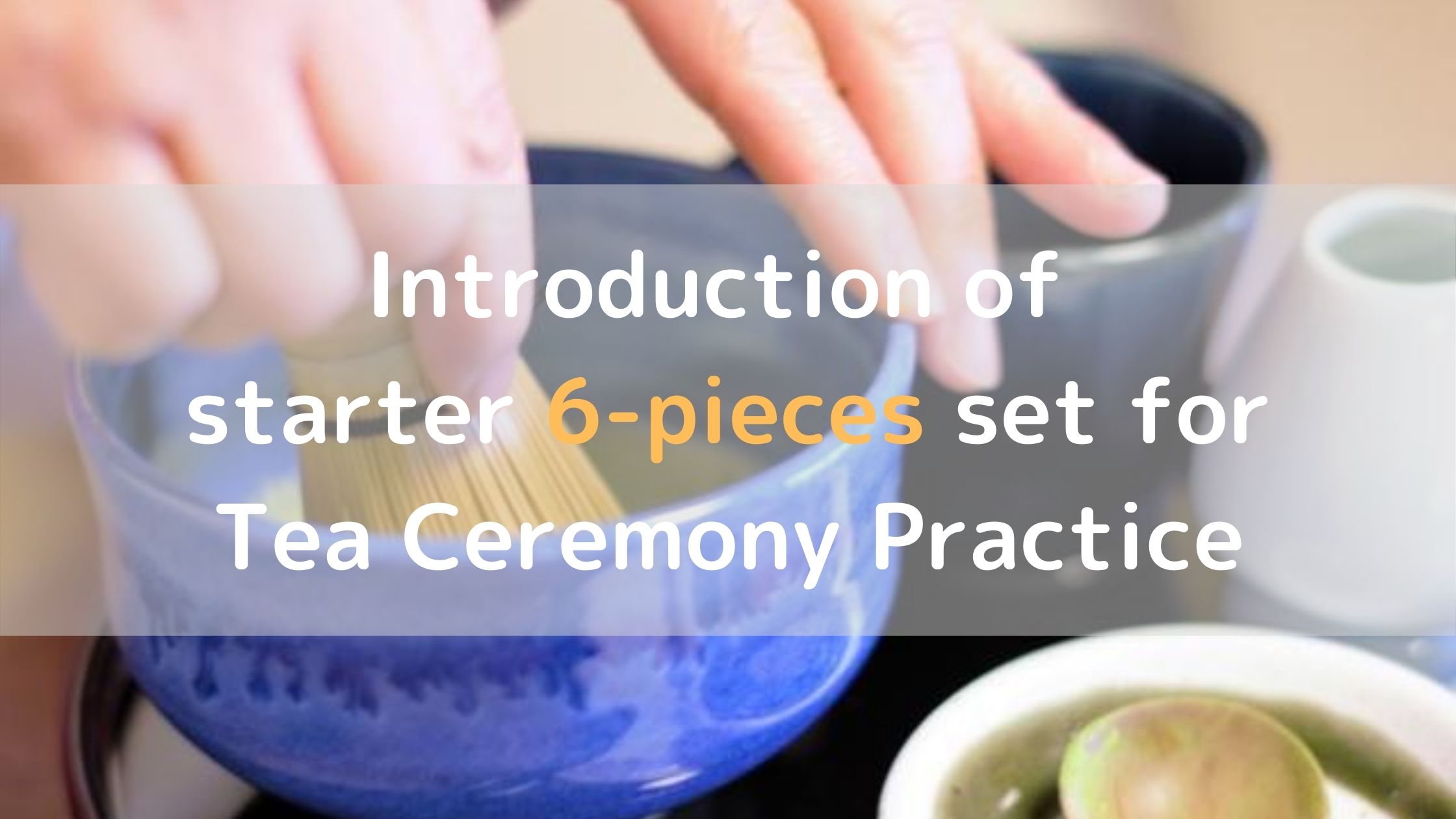
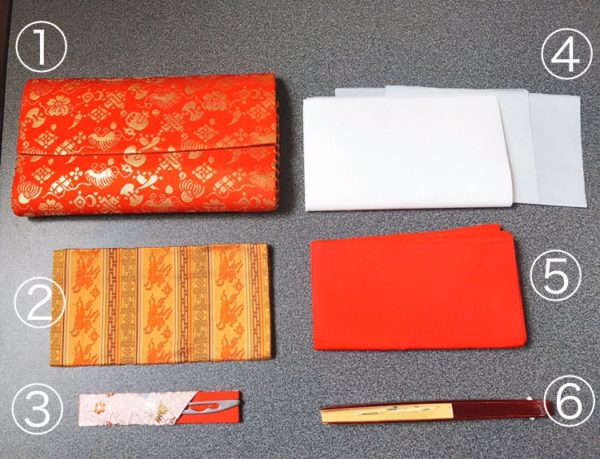
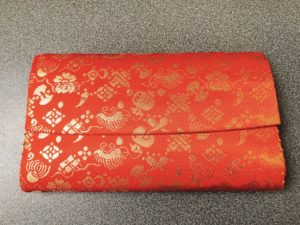
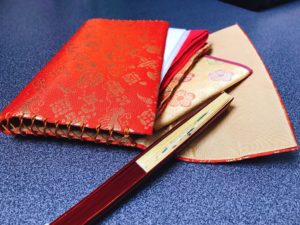
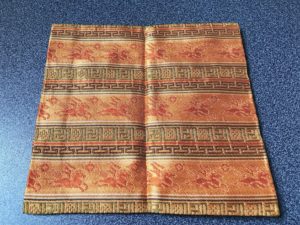
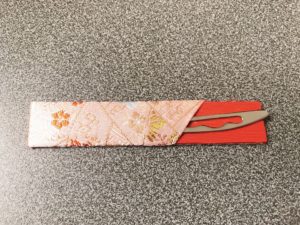
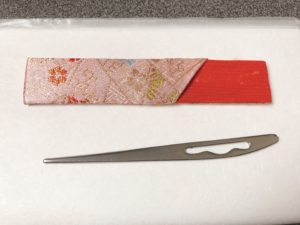
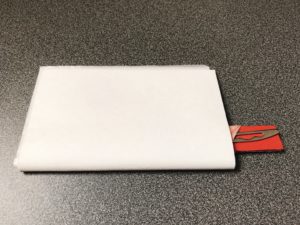
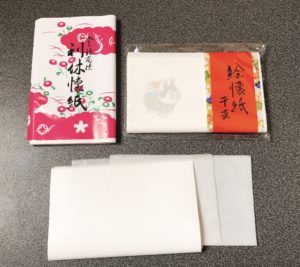
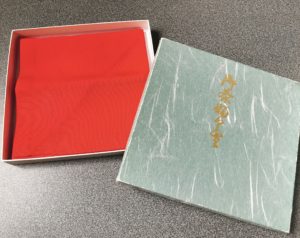
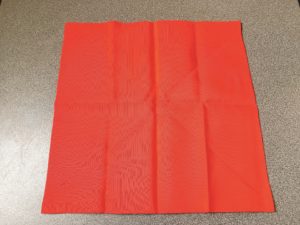
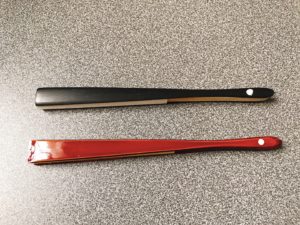
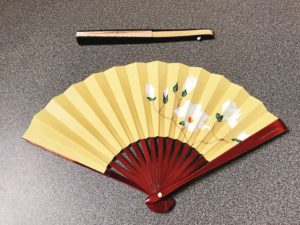
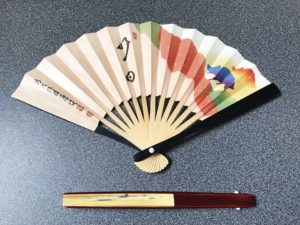
、矢羽根(やばね)-1-120x68.jpg)

Comment